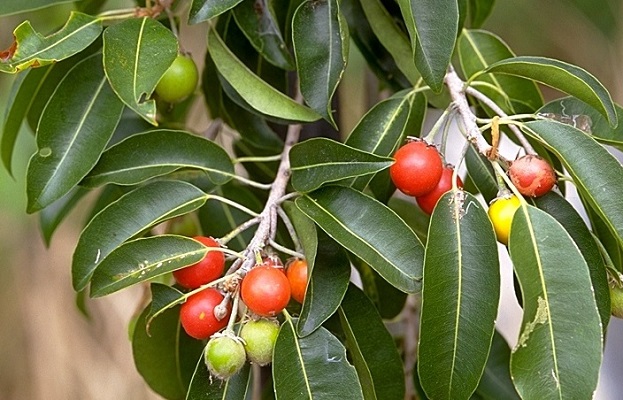On This Page
Prisniparni – Uraria Picta
Introduction
It is an important plant used in the Ayurvedic treatments. It is a small plant having linear and long leaves, hence got the name Prisniparni. The meaning of ‘Parni’ is leaves. It is also known as Chitraparni as the leaves possess variegated stripes. The inflorescence of the plant looks like the tail of lion, so it is called as Simhapucchi.
Dr.Gupta’s IAFA has been continuously working on Prisniparniplant for discovering more medicinal properties the plant. Our experts found out that the plant can act ascardiotonic, lipid lowering, antiulcer,hepatoprotective, anti-inflammatory, antineoplastic, antimicrobial, antioxidant, hypoglycemic, hypocholesterolemic and antidiabetic activity. It also possessesantiarrhythmic, anticholinergic, analgesic, antitumor, antihypertensive, antipyretics, antimalarial, stimulant, anti-HIV, antileukmic properties.
Action of Prisniparni–Uraria picta in Allergies
IAFA has been conducting various studies on Prusniparni found out the antiallergic and anti-inflammatory actions of the plant. The various chemical constituents present in this plant shows anti-inflammatory activity. Prusniparni is very useful in skin diseases by its anti-inflammatory and anti-histamine activity.
Vernacular Names
| Sanskrit Name | Prusniparni |
| Hindi Name | Pithavan ,Dabra |
| English Name | Prsniparni |
| Malayalam Name | Orila |
| Kannada Name | Narichaladagida, Nadyala bone |
| Telungu Name | Kolaku panna |
Botanical Name
Uraria picta
Family
Fabaceae
Morphology of Prisniparni–Uraria picta
- Small herb
- Stem – stout
- Leaves – striped, 3-5 in number.
- Leaflets – imparipinnate, linear –oblong, obtuse
- Flowers- puple coloured, cylindrical raceme
- Fruit – 3-6 joints, glabrous
Ayurveda reference of Prisniparni–Uraria picta

Geographical distribution of Prisniparni–Uraria picta
The plant prusniparni is found in all over the India. Also found in tropical Africa, Malaysia etc.
Phytoconstituents of Prisniparni–Uraria picta
The phytoconstituents found in the plant Prusniparni are alkaloids, flavonoids, steroids, terpenoids, phenols, saponins tannins and glycosides. It also possesses macro elements like Na, K etc.
Parts used of Prisniparni–Uraria picta
- Root
- Whole pant
Dosage of Prisniparni–Uraria picta
- Decoction – 50 – 100 ml
Medicinal Properties of Prisniparni–Uraria picta
- Dipaniya – Increases the secreation of digestive juices
- Vrshya – Aphrodisiac
- Samgrahi – Absorbent
- Sothahara – Alleviates swelling
- Angamarda prasamana- Relieves body pain
- Dahaprasamana – Relieves burning sensation
- Jvaraghna – Relieves fever
- Hrdya – Goods to heart
- Balya – Gives strength

Have A Health Issue?
Consult Online
- Dr. Sahil Gupta (B.A.M.S., M.H.A.)
Ayurvedic Allergy Specialist
CEO & Founder of IAFA®
Home remedies of Prisniparni–Uraria picta
In Ayurveda the treatment of different kinds of diseases are done by naturally availing non toxic drugs. We are continuously working on these plants to find out its pharmacological actions. IAFA have done so many studies on the plant Prisniparni and found out that it has wide range of actions. Some of the home remedies are given below.
- Bony fracture (Asthi bhanga)- 5 gm root powder and turmeric powder mixed with hot water is taken internally for 21 days.
- Fever (Jvara)- 20 gms of root powder is mixed with 400 ml of water, boiled and reduced to 60 ml and taken internally for 3 days.
- Gonorrhea – Poundered leaves are applied over affected area.
- Snake poison (sarpa visha)- 20-30 ml of juice of whole plant is taken internally for 3 adys.
- Ulcer (vruna)- 10 gm of root powder is taken along with honey for 7 days.
- Bleeding piles (raktharsas) – 20 gms of root of Prsniparni and Bala is taken, mixed with400 ml of water boiled and reduced to 100 ml and taken internally for 5 days.
- Ulcerative colitis – gruel cooked with prisniparni is given.
- Joint pain – 40 gm of root powder is mixed with 200 ml of water, boiled and reduced to 100 ml and taken internally with sugar for 3 days.
Dr. Gupta’s IAFA provides safe, pure and non toxic Ayurvedic medicines. Our treatment protocols are completely based on Ayurvedic principles. According to Ayurveda each and every plants in the world has its own medicinal properties. Samhitas, Ayurvedic texts explains the properties and actions of almost all the plants. We are mainly focus on alleviating allergic disorders by using naturally available herbs which have less to no side effects. We can assure the safety of our customers as we are subjecting our products to various tests.
Reach IAFA for safe herbal remedies for all your ailments!!!
Was this Page Helpful?
Read More Articles

Kasini (Cichorium intybus)
Know about the uses, benefits, and medicinal properties of Chicory, Kasini (Cichorium…









